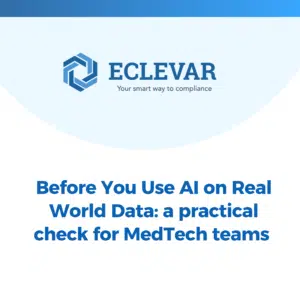
Subscribe to our monthly newsletter to receive expert insights on clinical trials, real-world data and best practices for MedTech companies.
You have successfully joined our subscriber list.
Subscribe to our monthly newsletter to receive expert insights on clinical trials, real-world data and best practices for MedTech companies.
You have successfully joined our subscriber list.
VISIT US
ECLEVAR HEALTHTECH:
75380 58 RUE DE MONCEAU 75008 PARIS
ECLEVAR GMBH
ERFURT, Erfurt Hauptbahnhof
4th, 5th floor
Bahnhofstr. 38 Erfurt 99084
ECLEVAR Australia
Umina Beach NSW 2257, Australia
ECLEVAR UK Limited
3rd Floor 207 Regent Street, London, W1B 3HH
CONTACT US